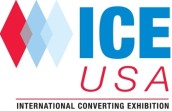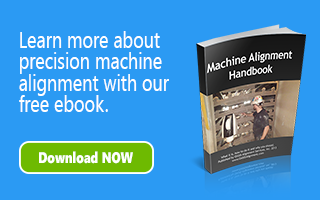Roger Cross, OASIS Project Manager, recently presented “Improving Efficiency and Product Quality with Precision Alignment” at ICE USA on February 10, 2015. ICE (International Converting Exhibition) was held at the Orange County Convention Center in Orlando, Florida, February 10-12, 2015. In this post we provide a brief overview of the topics covered in the presentation. The link to the full presentation is provided below. For information on ICE USA, visit www.ice-x-usa.com.
Precision alignment of converting equipment can significantly improve operating efficiency, product quality and customer satisfaction, while reducing machine downtime and excess waste. With so many alignment methods, technologies and suppliers to choose from however, it can be difficult to select the option that will provide the highest return on investment. “Improving Efficiency and Product Quality with Precision Alignment” provides an overview of precision alignment, misalignment causes and effects and the benefits of precision equipment alignment. Additionally discussed are recommended alignment practices and a review of precision alignment technologies.
Causes and Effects of Misalignment
Equipment misalignment happens. The many causes of misalignment include improper alignment at the time of installation, shifting or settling of floors and equipment, vibration that can cause bolts to loosen or wear on components, breakdowns/emergency repairs, corrosion, regular maintenance and equipment upgrades. Addressing the causes of misalignment is extremely important, however the effects of misalignment can be very costly. Issues that are often seen when equipment is out of alignment include web wrinkles, baggy edges or breaks, inconsistent coating profile, uneven heat/chill transfers, web guiding/tension problems, static build-up, elevated scrap rates, premature bearing and coupling failures, excessive downtime and higher than normal energy consumption.
Benefits of Precision Alignment
Precision alignment can significantly reduce or eliminate the problems listed above. Proper alignment will allow a machine to run at or above design speed, reduce set up and thread up time, increase product quality, increase productivity and typically provide a very fast return on your investment.
Alignment Practices & Technology Options
Choosing from the wide range of service providers, tools and techniques for precisely aligning production machinery can present a daunting task when equipment alignment issues arise. Having a clear understanding of your needs and the corresponding technologies will help with selecting the best option.
Current technologies include; optical instruments, laser coupling-to-coupling systems, laser line of sight systems, laser trackers, gyroscopic systems and more. All have their advantages and disadvantages and all have applications where they are the technology of choice. Issues that must be addressed and that can affect your decision include: operating/technology costs, workplace conditions such as heat, humidity, etc., instrument versatility and others.
Is there one alignment technique that is the absolute best? The answer is no, but there are several highly accurate options. Production machinery is complex and alignment needs can vary due to the age of the equipment, production levels and operating speeds, OEM specifications, processes and even the product that is being manufactured. Vendors that offer alignment can differ greatly in their levels of expertise, experience and skill sets. In order to receive the best return on your alignment investment, keep in mind that you are hiring the expertise and the experience of the people in the alignment company – NOT just the alignment technology.
Precision alignment of converting equipment can increase product quality, productivity and efficiency, while significantly reducing problems in production and maintenance. Most alignment procedures have a short payback time. The gains in productivity, efficiency, quality, and customer satisfaction significantly enhance the return on investment.
 “Improving Efficiency and Product Quality with Precision Alignment” was presented at ICE USA in Orlando, Tuesday on February 10. If you would like a copy of the presentation, please click the link below.
“Improving Efficiency and Product Quality with Precision Alignment” was presented at ICE USA in Orlando, Tuesday on February 10. If you would like a copy of the presentation, please click the link below.

